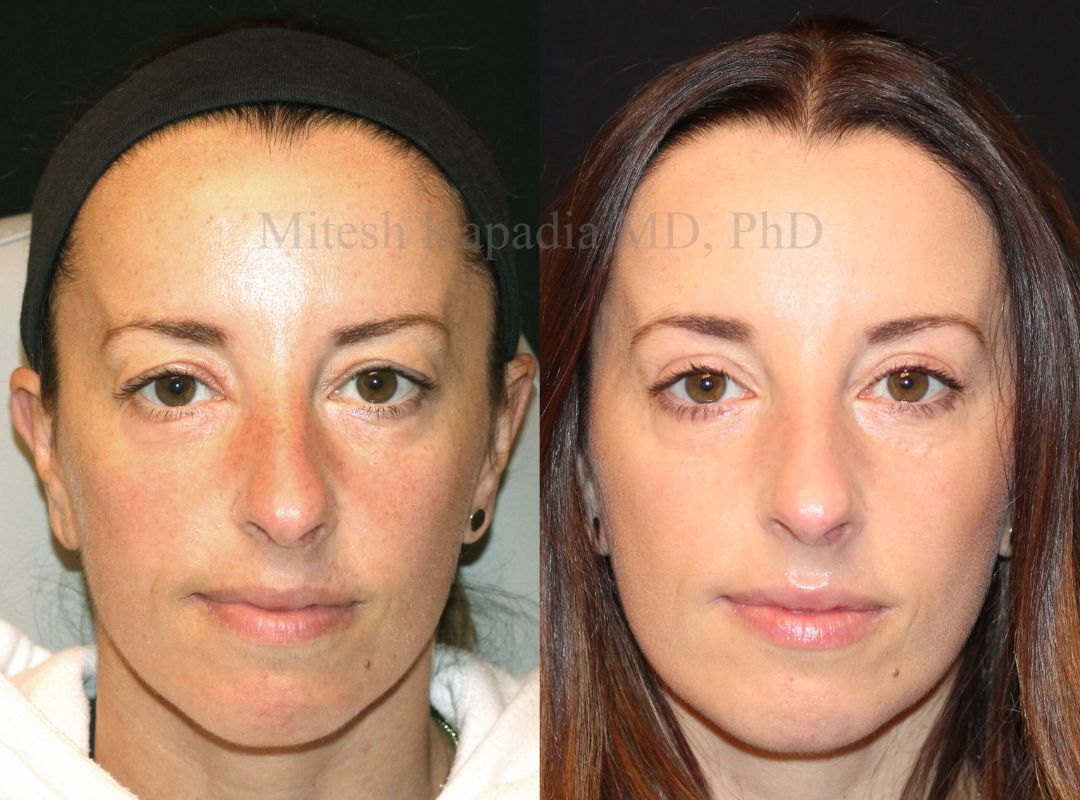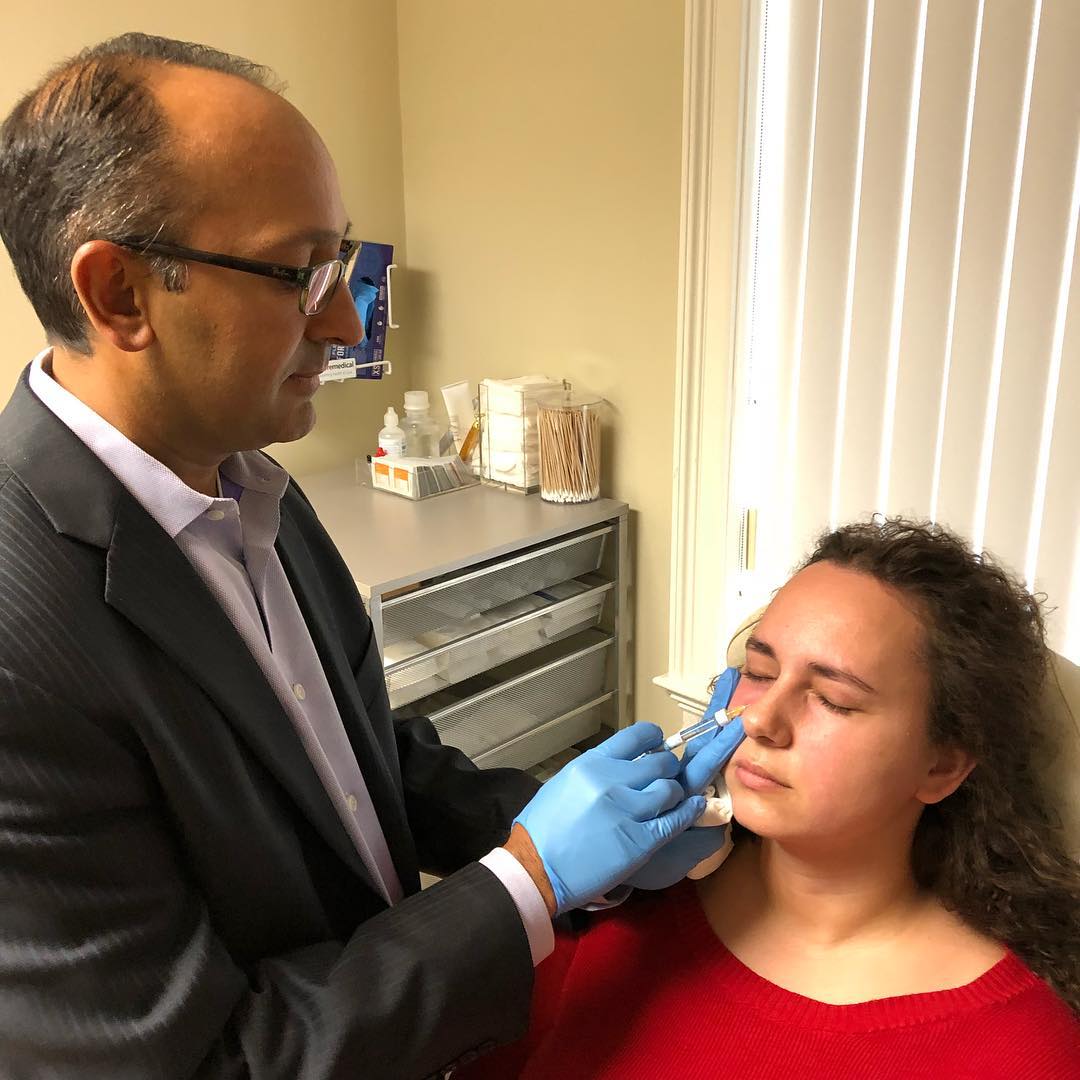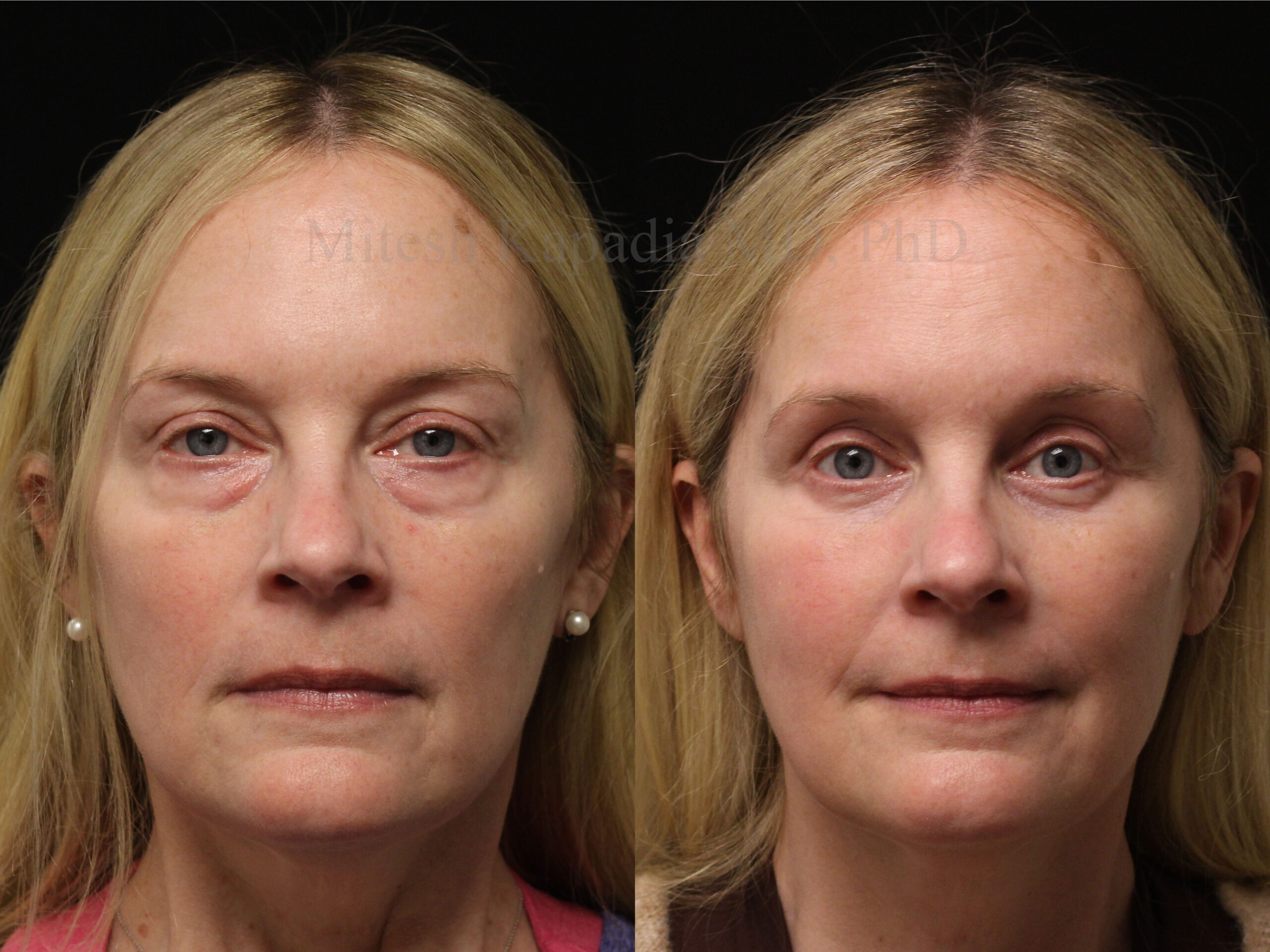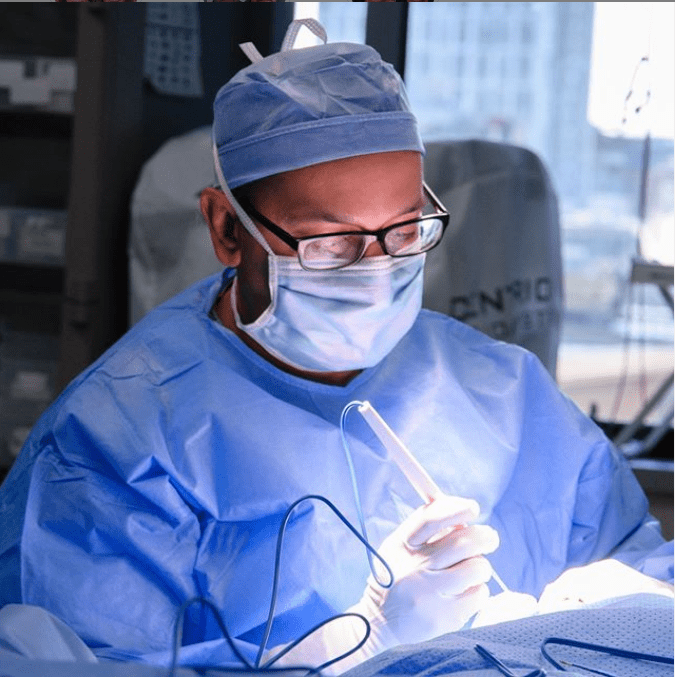Author
Boston Eyelid Surgery
Share

Upper blepharoplasty surgery, also known as upper eyelid surgery, is the removal of excess skin and fat in the upper eyelids. The surgery can be performed for medical purposes to improve vision or for cosmetic purposes for a more youthful, less tired look.
Upper blepharoplasty surgery can sometimes be covered by medical insurance. This article will discuss the similarities and differences between medical upper eyelid surgery and cosmetic upper eyelid surgery.
Medical upper blepharoplasty and cosmetic upper blepharoplasty are similar but not identical procedures, and there are important differences prospective patients should know about. The main goal of medical upper eyelid surgery is to remove excess skin so the eyelids open better to improve vision. The main goal of cosmetic upper blepharoplasty surgery is to make patients look younger and less tired by maximizing aesthetic improvement. Medical upper blepharoplasty patients often, but not always, look better than they did before surgery, but the overall cosmetic improvement isn’t necessarily optimized.
When is Upper Blepharoplasty Surgery Covered by Insurance?
Upper eyelid surgery is covered by some, but not all, medical insurance plans if a number of specific criteria are met. Each insurance company has different specific criteria, but these are the general guidelines:
- A patient has significant difficulty with daily activities such as reading, driving, or working on a computer due to the eyelids drooping.
- The upper eyelids do not open to a normal position – the distance between the middle of the pupil and the upper eyelid has to be 2.5mm or less. Your doctor can measure this during a consultation.
- A field of vision test has to demonstrate that at least 20-30% of the upper field of vision is obstructed by your eyelids. Again, this is a test that can be done during a consultation.
If all (not some) of these criteria are met, upper eyelid surgery may be covered by your medical insurance. Note the word “may”. Your insurance can still deny coverage even if you meet all these requirements.
No medical insurance plan in the United States covers cosmetic surgery. If your doctor says you are having cosmetic surgery, and it will be covered by insurance, that is insurance fraud.
Keep reading if you want to know why you may want to pay for surgery as an out-of-pocket expense even if your surgery is “approved” by insurance.
Surgical Goals
The main goal of medical upper eyelid surgery is to remove enough skin so the eyes open fully and there is no visual obstruction. The goal of cosmetic eyelid surgery is to optimize a patient’s appearance. These are different goals and can result in different outcomes. It’s important to discuss your expectations with your surgeon prior to surgery. Patients who have medical upper eyelid surgery may look better after surgery than before, but the improvement isn’t always optimized.
Differences Between Medical & Cosmetic Upper Eyelid Surgery
When upper eyelid surgery is covered by medical insurance, it only pays the surgeon a fraction of the fees for a cosmetic procedure, typically 20% or less. In most cases, you get what you pay for. Most doctors who accept medical insurance will not take the same amount of time, effort, planning, and post-operative care for a cosmetic procedure when they are doing the surgery at an 80% discount.
Meticulous pre-surgical planning is required to optimize the outcome of upper blepharoplasty surgery. Considerations include:
- What shape to make the skin incision
- How much skin to remove in different parts of the eyelid
- Height and shape of the eyelid crease
- Whether or not ptosis is present and whether or not it needs to be corrected
- How facial bony asymmetry affects the eyelids
- Depth of the superior sulcus and how the skin will fold afterward
- Texture of the upper eyelid skin and how it will affect the results
- Lower eyelid height and how this will affect the overall shape of the eye
- Position of the lacrimal gland and whether or not lacrimal gland prolapse needs to be repaired
Care After Surgery
The care of patients after surgery is often different between medical and cosmetic procedures.
Revision surgery
After surgery has fully healed, a subset of patients may need a “tweak”, a minor secondary procedure to optimize the results. The two sides can sometimes heal unevenly and require additional skin and/or fat removal from one or both sides. In my office, minor revisions are performed at no cost to the patient. Revision procedures are not usually covered by medical insurance if there is no residual visual obstruction.
Surgical scars
Most upper eyelid scars heal very well and fade to a faint line, which is barely visible with time. Maturing the scar is a two-year process. That being said, there can be occasional issues with scars that require additional treatment. Very thick scars in the early postop period can benefit from scar modulators such as 5-FU. If scars stay thick or thicken later, CO2 lasers can help. If a scar is still red 3-6 months after surgery, pulsed dye laser treatments can help reduce redness. Bumps along scar lines may require injections, cautery, or a wound revision. None of these types of procedures are covered by medical insurance, but are performed at no additional cost to patients in my office when needed.
Summary
Medical upper blepharoplasty and cosmetic upper blepharoplasty surgery are similar but not identical procedures and often have different goals and outcomes. My advice to potential patients is to choose an eyelid surgeon who is aligned with your goals and expectations and can provide top-notch care after your procedure. This often means paying out-of-pocket for a procedure, even if another surgeon says it may be covered by medical insurance.






